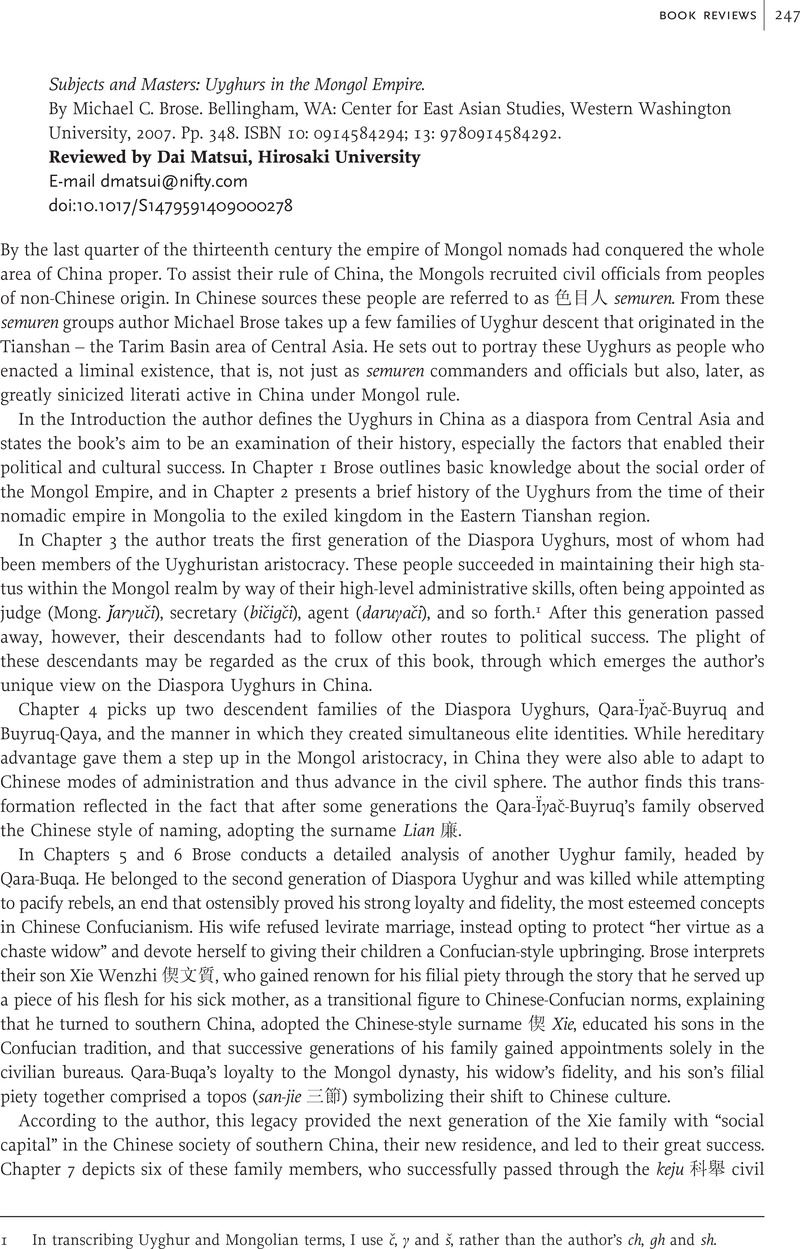Published online by Cambridge University Press: 31 July 2009

1 In transcribing Uyghur and Mongolian terms, I use č, γ and š, rather than the author's ch, gh and sh.
2 Noriko, Miya 宮紀子, in Nairiku Ajia gengo no kenkyū 内陸アジア言語の研究 [Studies on the Inner Asian Languages] 19 (2004), pp. 177–79Google Scholar.
3 Kanji, Ogawa 小川貫弍, in Indogaku Bukkyōgaku kenkyū 印度學佛教學研究 [Journal of Indian and Buddhist Studies] 4:1 (1956), p. 35Google Scholar.
4 Brose posed the same question previously, in T'oung Pao 91 (2005), p. 408.
5 See, e.g., Takao, Moriyasu, Die Geschichte des uigurischen Manichäismus an der Seidenstraße, Wiesbaden, 2004, pp. 149–51Google Scholar.
6 Dai, Matsui 松井太, in Tulufanxue yanjiu: di er jie Tulufanxue guoji xueshu yantaohui lunwenji 吐魯番學研究 : 第二屆吐魯番學國際學術研討會論文集, Shanghai, 2006, pp. 196–202Google Scholar.
7 Shimin, Geng 耿世民 and Guangda, Zhang 張廣達, in Lishi yanjiu 歴史研究 1980–2, pp. 147–59Google Scholar.
8 Moriyasu, Geschichte d. uig. Manichäismus, op. cit., pp. 33–34, fn. 94.
9 Hiroshi, Umemura 梅村坦, in Nagata, Y. and Matsubara, M., eds., Isuramu sekai no hitobito 3: bokuchikumin イスラム世界の人々3・牧畜民. Tokyo, 1984, pp. 109–49Google Scholar.
10 Ch'i-ch'ing, Hsiao 蕭啓慶, in Han-hsüeh yan-ch'iu 漢學研究 [Chinese Studies] 18:1 (2000), pp. 101–28Google Scholar.